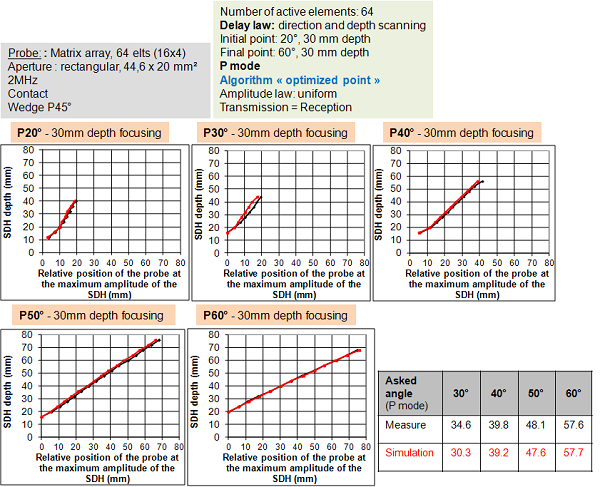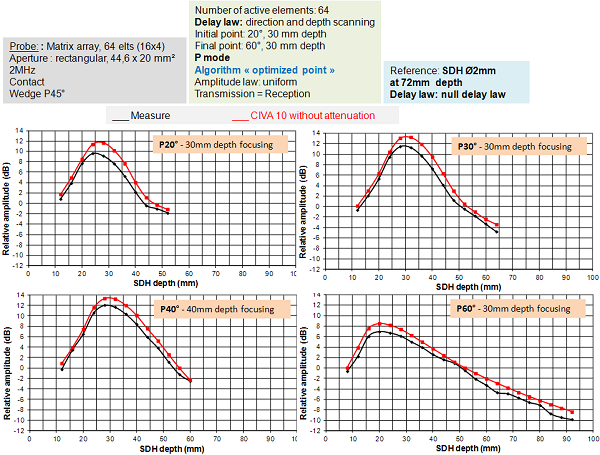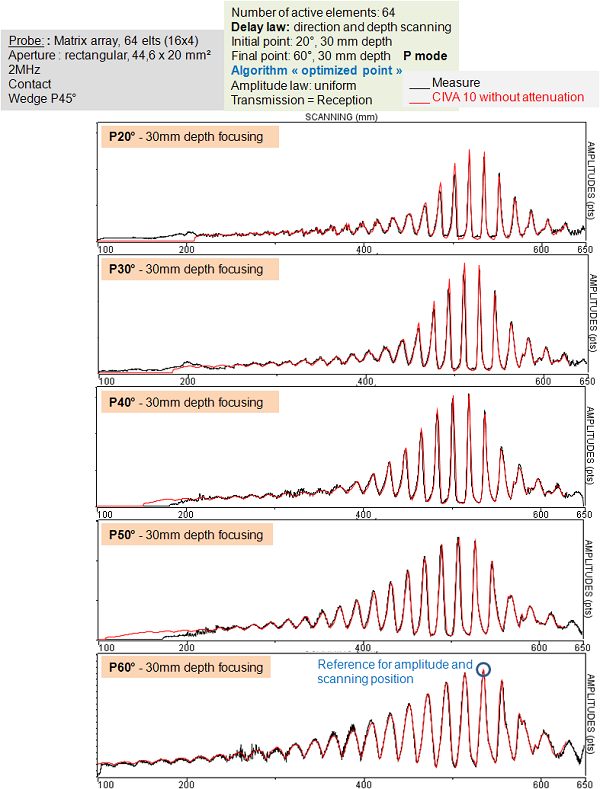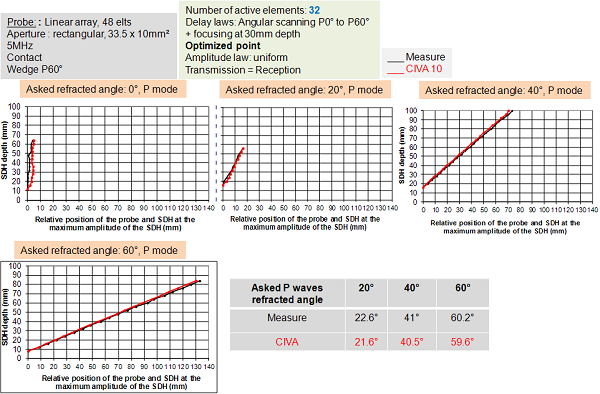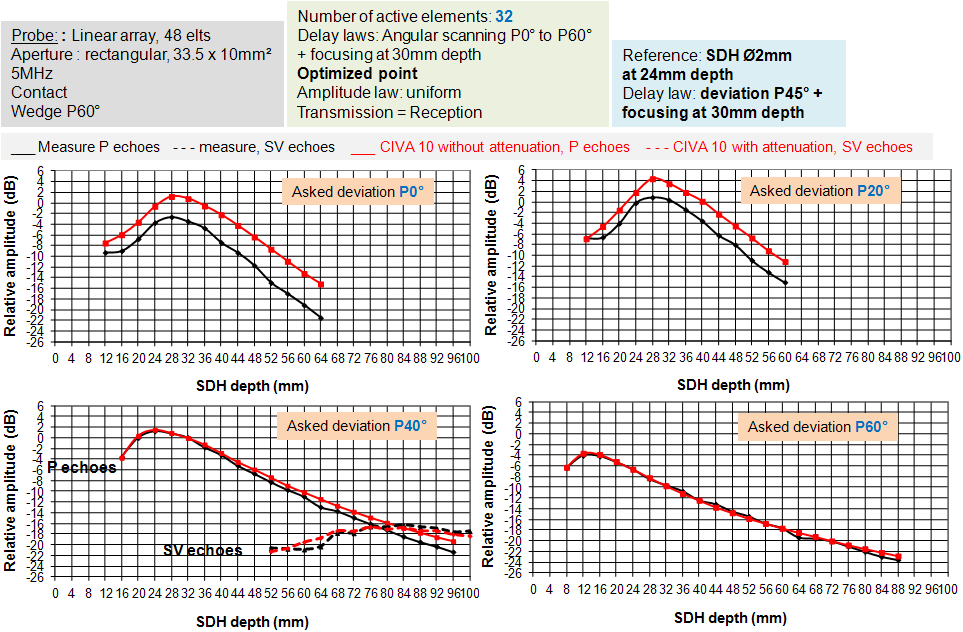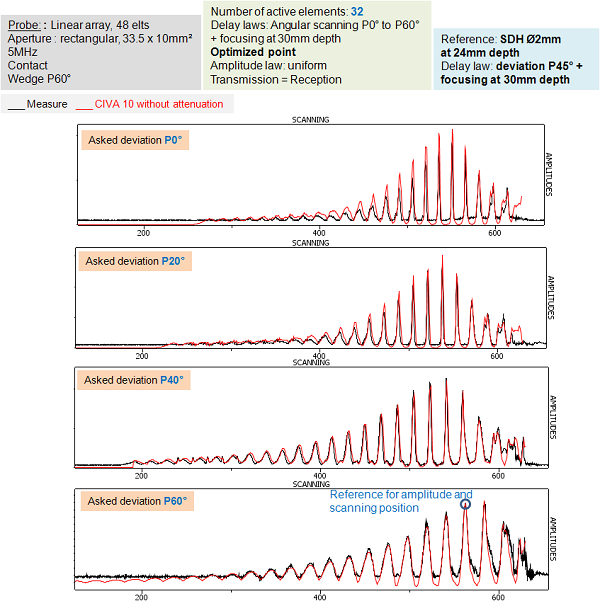UT – Phased Arrays – Results obtained for the direction and depth focusing algorithm
Summary
Result obtained with the 2 MHz matrix probe
Delay law: sectorial scanning with focusing at 30 mm depth, 64 active elements, first deflection angle : 20°, last deflection angle : 60°, P waves calculation for delay law.
With this probe, there is a good agreement between simulation and experiments for amplitude evolution, echodynamic curves, and measurements of the refraction angle (except at 30°). It can also be observed that for deflection angles far from 45°, i.e. the natural deflection angle of the probe, the focusing is not ensured at the desired depth ( for a 30° deflection, the focusing is achieved at 25 mm instead of 30 mm; for a 60° deflection, the focusing is performed at 20 mm instead of 30 mm). The results obtained are presented on the three figures below:
left: Experiment/CIVA comparison of refraction angles defined for delay law calculation from experiment or simulation (P echoes from SDH)
middle: Ø2 mm SDH amplitude comparison (experiment/CIVA), P direct mode
right: Ø2 mm SDH echodynamic curves comparison (experiment/CIVA), P direct mode
Results obtained with the 5 MHz linear probe
Delay law: sectorial scanning with focusing at 30 mm depth, 32 active elements, first deflection angle : 30°, last deflection angle : 60°, P waves calculation for delay law.
With this probe, there is, on the overall, a good agreement between simulation and experiment for the amplitude evolution and for echodynamic curves. However, some differences on the refraction angle, the amplitude and the focusing point may occur when the deflection angle is far from the natural refraction angle of the probe. With this probe, the differences occur for a refraction angle of 0° (the simulated amplitude is larger than the experimental one (+5 dB)) and for the deflection law at 20° (+2 dB).
The results are presented on the three following figures:
left: Experiment/CIVA comparison of refraction angles defined for delay law calculation from experiment or simulation (P echoes from SDH)
midlle: Ø2 mm SDH amplitude comparison (experiment/CIVA), P direct mode
right: Ø2 mm SDH echodynamic curves comparison (experiment/CIVA), P direct mode
CONCLUSION
Generally, the delay laws provided by CIVA in order to deviate and/or focus the acoustical beam allow to obtain the desired results. The deflection and the focusing are well achieved experimentally when the desired refraction angle is not far from the natural one which is imposed by the wedge. If it is not the case, the focusing is performed at a depth different from the one expected (smaller depth in general). This is normal since the larger is the deflection, the smaller is the apparent probe aperture which reduces the near field limit where accurate focusing can be achieved.
Continue to General conclusion
Back to Phased arrays

